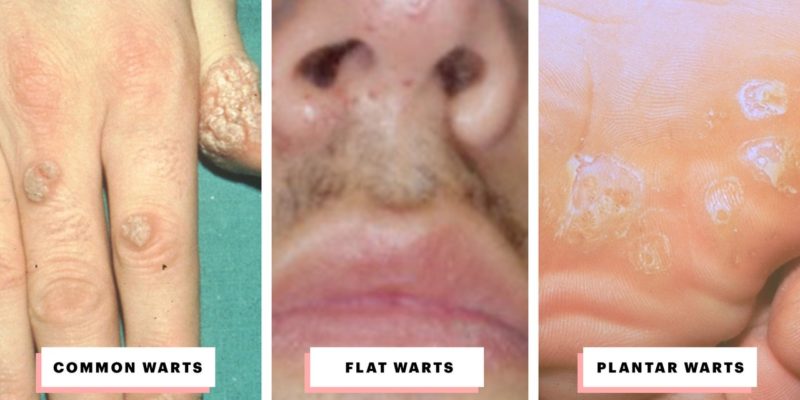
“You can find these benign warts in the vagina, the cervix, around the vulva, and in the anus,” explains Millheiser. They can also appear in the mouth and throat if spread through skin-to-skin contact. Certain strains of HPV can cause cancer, which is why getting any below-the-belt bumps checked out is so important. “There are cancerous lesions that may start as a small wart and then spread,” says Millheiser.
Causes of warts
Long story, short: “We aren’t sure why some people get warts and others don’t,” says Jhin. While it’s not an exact science, are three main risk factors that likely play into your wart risk.
First, your immune system. Since warts are caused by a virus, having a compromised immune system (whether from an inherited condition, medication, or disease like cancer) can make you more susceptible. “There’s no question that people who are immune-compromised will be at risk for all types of infections including warts,” says Brodell. This is likely why kids tend to get warts more often than adults. “Most adults have probably already had warts and developed a specific immunity to them,” Brodell explains.
Breaks in your body’s natural barrier can also make you more likely to get warts. “If someone for instance has dry, cracked skin, it makes sense that it might be easier for the virus to take hold if someone is exposed,” explains Brodell. For that reason, people with skin conditions like eczema might also be partially vulnerable to warts. Finally, there may also be a genetic component, Jhin adds.
But no matter how susceptible you are to warts, you can’t get them without being exposed, which happens through skin-to-skin exposure. “It could be sexual exposure, shaking hands with someone with warts on their hands, even walking on the floor after someone walked by and left a little piece of the virus behind,” explains Brodell. Anytime you come into direct contact with the presence of HPV anywhere on the body, it’s a risk.
How to get rid of warts
While there’s no cure for HPV (and therefore no way to “cure” your wart), treating them is relatively simple in most cases. “For common warts on the hands and feet, the most common treatment is liquid nitrogen cryotherapy,” says Brodell. “That’s when a doctor sprays the liquid nitrogen on the wart, which freezes it to 192 degrees below zero — it kind of stings and burns and the top of the wart dies, tends to crust up, and finally falls off.”